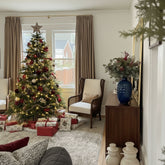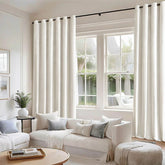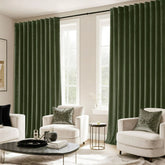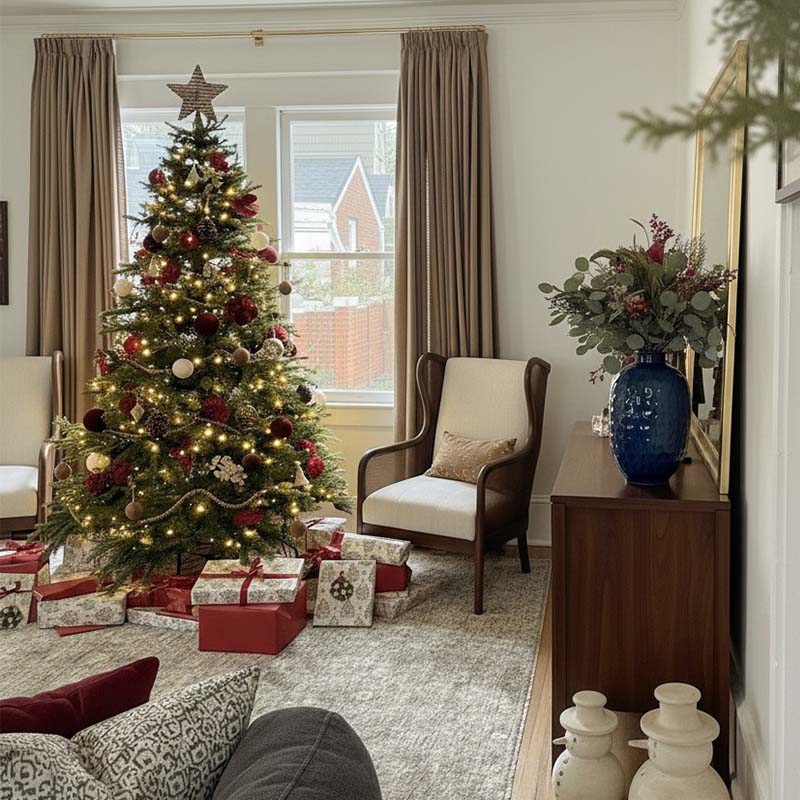The Golden Ratio of Curtains: America’s Love for Extra-Long & Extra-Wide Drapes
Guideline of Extra-Long & Extra-Wide Drapes
Curtain proportion matters, but it’s about right-sizing for the room, not making panels unnecessarily long or wide.

1. Rod Height
Tip: Higher rods make walls feel taller; lower rods create a neat, understated look.
Mount the rod slightly above the window frame for visual height.
For a classic look, place it 2–6 inches above the trim.
Panels should just touch the floor or puddle slightly. Avoid floating curtains that visually cut off the room. — Real Simple
2. Fabric Width & Fullness
Tip: Proper width gives natural folds and fullness.
Total panel width = 2.0–2.5× the window or track width (combined width of all panels).
For two panels, divide the total width by two.
Example: Window 60 in → total 120–150 in → each panel 60–75 in.
Sheer fabrics may need the higher end to appear full. — Homes & Gardens
3. Rod Extension
Tip: Extend the rod just enough for neat stacking and full exposure of the glass.
Rod extension per side = 4–10 inches.
Avoid extreme extensions that crowd furniture or block sightlines. — The Spruce
4. Fabric Choice & Layering
Tip: Combine aesthetics with function.
Layer sheers with lined drapes for light control, privacy, and insulation.
Fabric choices:
Linen or cotton for casual, textured looks.
Velvet or blackout fabrics for light blocking and thermal control.
5. Quick Measuring Cheat Sheet
Step 1: Measure Length
From rod/track to floor → panel length.
Step 2: Calculate Total Width
Total panel width = window/track width × 2.0–2.5 (adjust for sheers or desired fullness).
Step 3: Rod Extension
Rod extension per side = 4–10 in (adjust for furniture and space). — Architectural Digest
Balance and proportion are key: higher rods and slightly fuller panels suit tall or wide windows, while practical sizing works for smaller spaces. Thoughtful measurements create a professional, intentional look without overdoing it.
Quick Tip: Focus on ratios and stacking rather than “extra-long” panels — subtle adjustments make the room feel polished and intentional.









